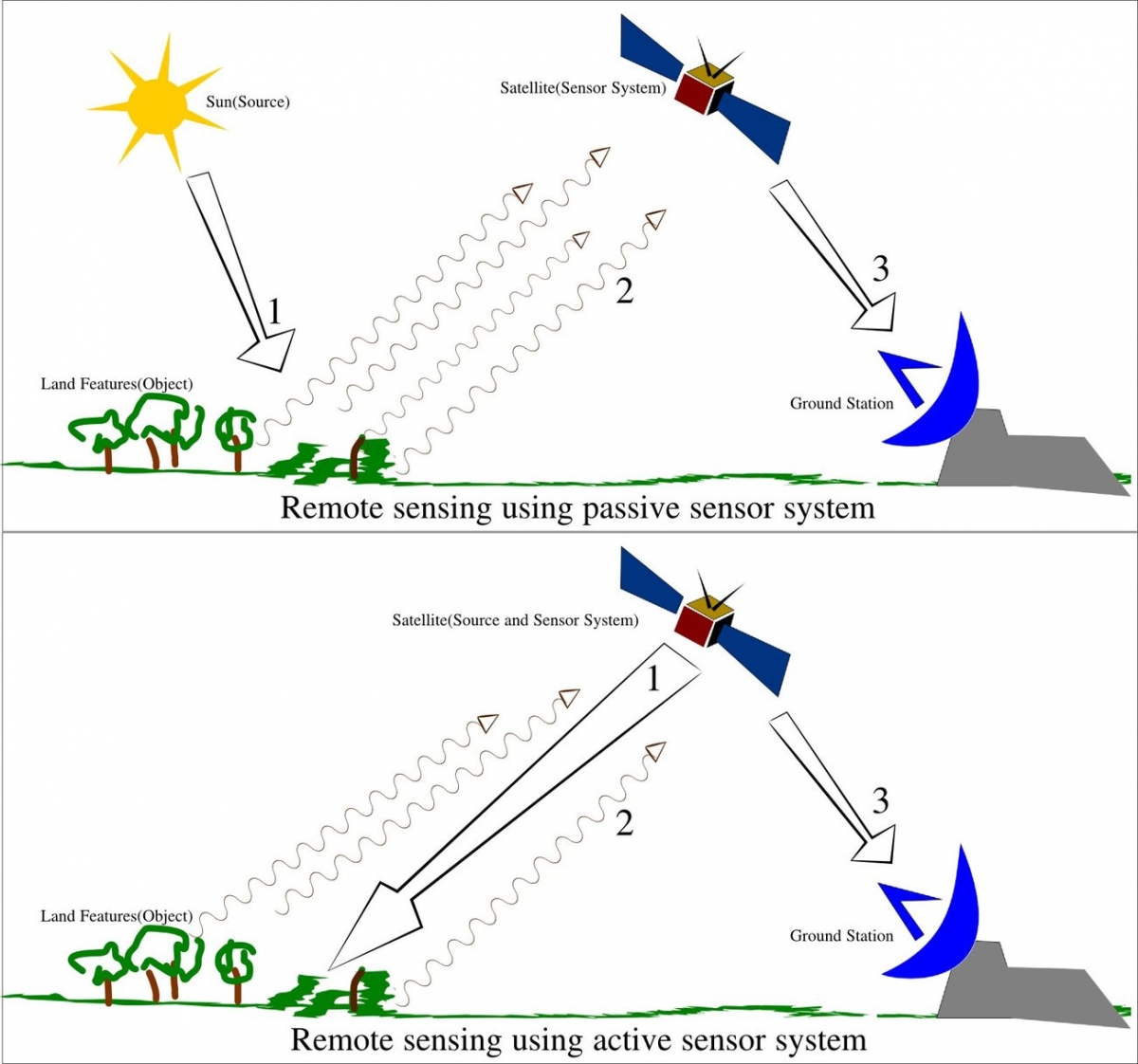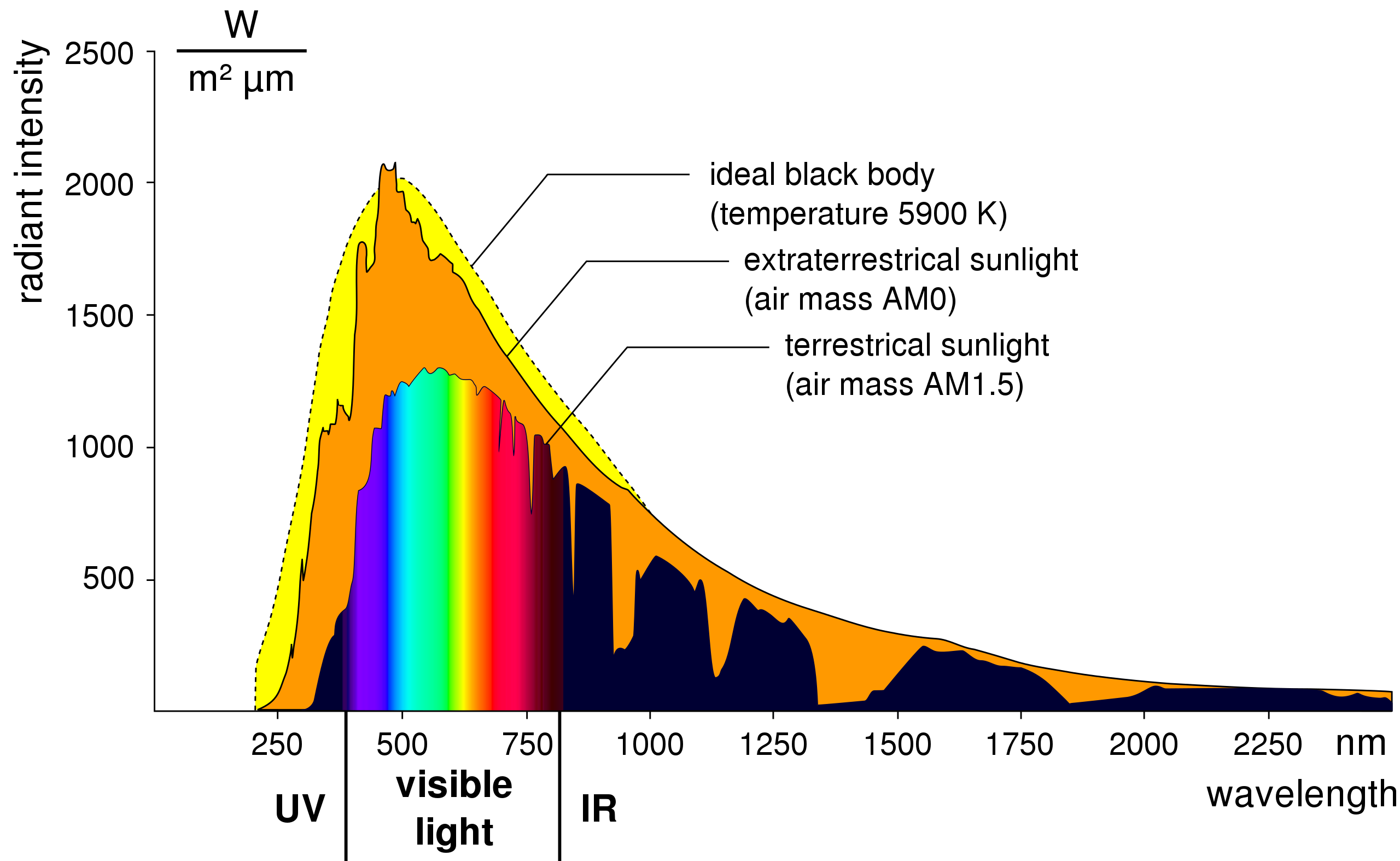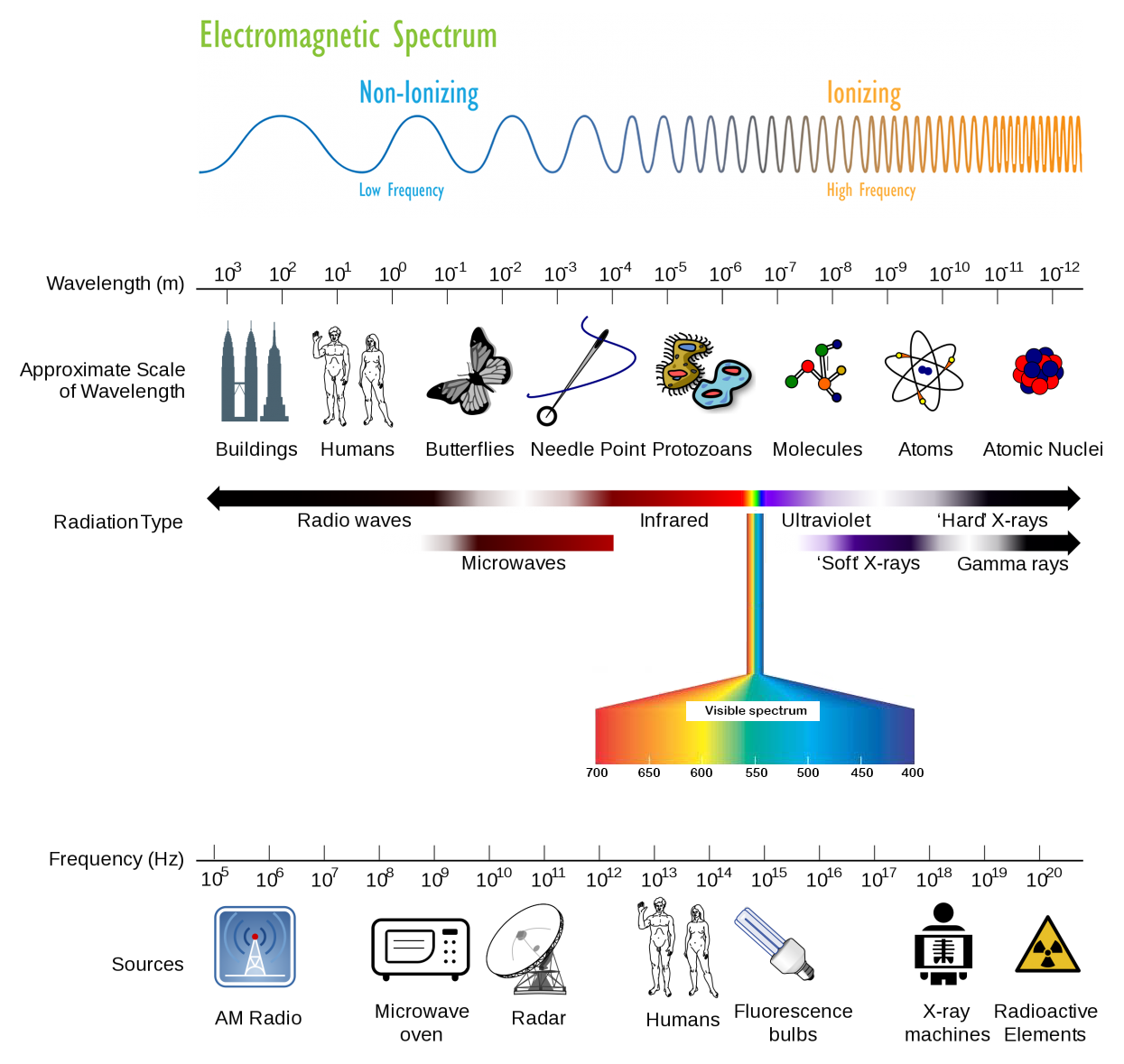I - WHAT CAN WE OBSERVE AND HOW?
2- WHERE DOES RADIATION COME FROM?
Strictly speaking, we all radiate! That's right, every object emits electromagnetic energy in the form of radiation due to the agitation of charged particles that are present in all matter. When an atom or molecule loses energy, it emits a photon containing exactly the same amount of energy as was lost. This energy is therefore emitted by objects, but can also be transferred, absorbed and reflected by these objects in different proportions, depending on the nature of the objects and the wavelength of the radiation.
The most important source of radiation for us on earth is of course the sun. The intensity of solar radiation varies depending on the wavelength, but also on the height of the sun in the sky depending on the time of day and the season. As solar radiation penetrates the atmosphere, gases and dust absorb some wavelengths and dampen others. Ultimately, the part of the earth's surface that we want to capture with the cameras and sensors in our satellites, aeroplanes or drones is thus illuminated with a solar spectrum that has already been filtered by the absorption spectrum of the atmosphere.
Spectrum of solar radiation for a theoretical ‘black body’ that absorbs all radiation (yellow), at the top of the atmosphere (orange) and at sea level at average latitude (black/rainbow). Source : Wikimedia commons
The sun emits light in almost every part of the electromagnetic spectrum, but the highest intensity is in the ultraviolet (UV) part, the entire visible range (which results in ‘white light’) and the infrared (near-infrared to thermal infrared). As we have seen above, part of the solar radiation that reaches the earth is absorbed by the atmosphere. This is fortunate, because highly energetic radiation such as UV is harmful to humans. Other radiation is scattered by the atmosphere, such as some parts of the blue light (which explains the blue colour of the sky).
The light that ultimately reaches the earth's surface is reflected or absorbed, depending on the properties of the material or object in question. In that sense, the earth itself does not emit light, but reflects some of the incoming sunlight. The absorbed light partially warms the earth and is radiated back as thermal infrared radiation. Thermal infrared is not the only radiation emitted by the earth. Some remote sensing applications make use of emitted microwaves with relatively low energy, for example to detect sea ice. Just like the sun, the earth itself emits radiation of certain wavelengths, but obviously to a much lesser degree.
Source of original image: Wikimedia Commons,(EPA image - Electromagnetic spectrum.png and Electromagnetic spectrum with sources.svg) and Scientific Committee on Emerging and Newly Identified Health Risks, Light Sensitivity
Then there are also the artificial radiation sources that originate from human activities: artificial light, radio waves, microwaves (from mobile phone masts, for example). There are earth observation sensors that are specifically used to detect artificial light sources at night. Such applications make it possible to study human settlement patterns and economic activities.
We use remote sensing to study and map the atmosphere, the Earth's surface and the oceans, to detect changes and monitor ecosystems. We therefore try to determine the properties of certain surfaces or target objects using sensors. These devices can detect the reflection of observed surfaces in certain parts of the electromagnetic spectrum, which can then be converted into an image. The objects we want to observe must therefore emit or reflect radiation, according to their different physical or chemical properties, to enable us to detect and analyse them.
If we observe radiation that is emitted or reflected by the objects themselves, we refer to this as passive observation or ‘passive remote sensing’. We can also ‘illuminate’ the earth's surface ourselves. It may sound strange that we would place a flashlight in an aeroplane or satellite, but in fact it is not that different. Only our ‘flashlight’ does not emit visible light but microwaves, which in practice we call ‘radar’. These microwaves pass unhindered through thick cloud cover and ‘irradiate’ the earth's surface, after which they are partly reflected to our sensor, which captures them, just like solar radiation. We call this form of remote sensing ‘active remote sensing’.
Both systems, active or passive, have their advantages and disadvantages. A passive system requires an external source of illumination, in this case the sun. That is why it does not work at night or when it is cloudy. In Belgium, for example, the sky is completely or partially overcast about 70% of the time. Because observations are only possible during the day, observation periods are reduced to an average of 15% of the total time.
Fortunately, there are also advantages to this limitation of the possible observation time. Because the entire sun spectrum is available filtered through the atmosphere, the wavelength range in which observations are possible is very broad. Different parts of the electromagnetic spectrum can therefore be used. When these spectral ‘bands’ are broad and discontinuous, the data is called multispectral; when these bands are narrow and continuous, they are called hyperspectral.
Another advantage of these passive instruments is that they use little or no energy. Passive sensors are therefore cheaper, but also lighter and therefore better suited for observation by drones.

Passive remote sensing and active remote sensing - Source: Wikipedia
Active instruments, on the other hand, are not limited by the observation moment. They transmit and observe day and night, in clear or cloudy weather. In addition, the wavelength used can be chosen when designing the transmitter. We can therefore select a wavelength that is little or not represented in the solar spectrum and is little influenced by the absorption spectrum of the atmosphere to be able to make observations even on cloudy days. This is the case with radar sensors that transmit in the microwave domain.
An important disadvantage of so-called ‘transceiver’ instruments is that they are heavier and more energy-intensive; they are therefore placed on board aeroplanes or on satellite platforms equipped with large solar panels.
Furthermore, the observations will be limited to the selected wavelength. A second instrument is needed to obtain information on a different wavelength.



